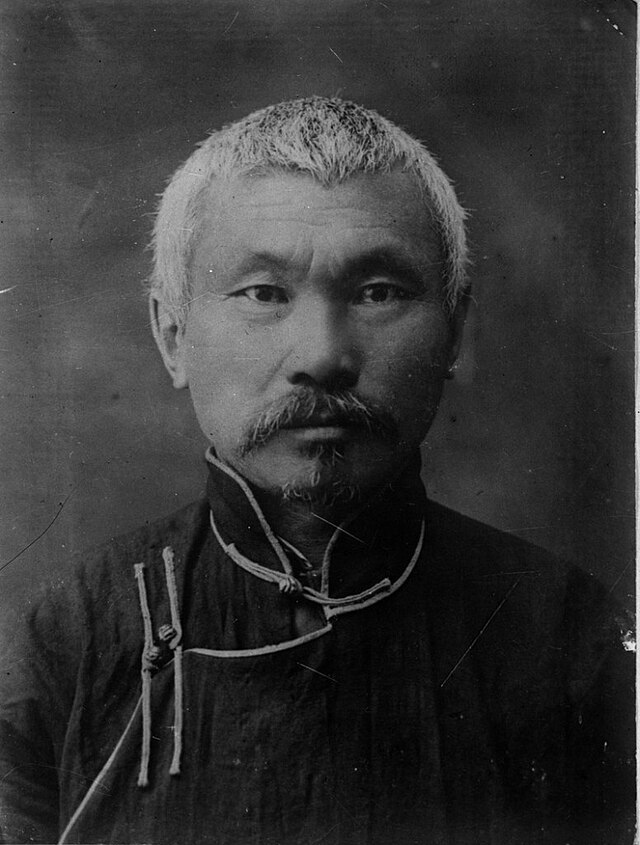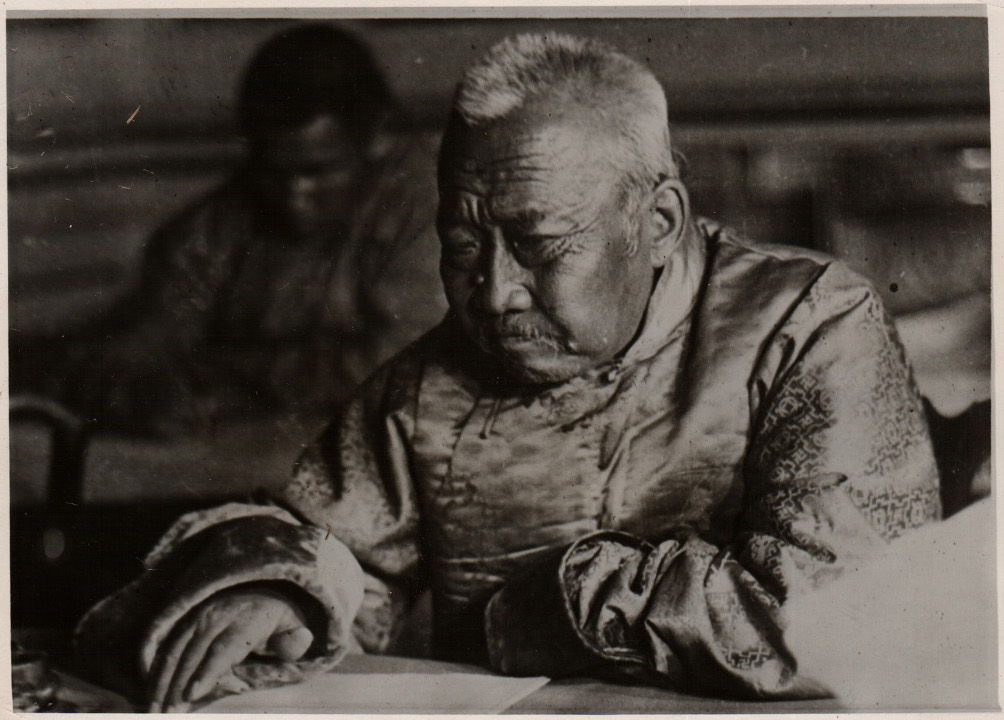In the meantime, the Mongolian leaders were not as enthusiastic about the world revolution as the Soviets and the Guomindang. ever since the Kyakhta Treaty, Prime Minister Tserendorj and Foreign Minister Amar had been dealing directly with both Russia and China and they were well aware of their real intentions. Although in Russia the Bolsheviks had replaced the Tsar and in China, the Guomindang had succeeded Yuan Shikai, the Treaty of 1924 showed clearly that the two nations’ approaches to Mongolia had not changed. But the leaders of Mongolia were still eager to seize an opportunity to built an independent Mongolia recognized not only by the USSR and China but also by the USA, Japan, and Europe. They started looking for ways to achieve that. In fact, they were ready to accept a full Soviet-type government in exchange for an independent Mongolia.
Contract with Germany and France
The Secretary-General of the MPRP, Dambadorj, made a trip to Europe to promote the activity of the Institute of Science and Letters. His mission, apparently not official, was to establish contacts with institutions in Europe involved in scientific research and, especially, in Mongolian Studies, and he was successful in establishing contracts in France and, especially, in Germany. It may well be that he went without any authorization from the Soviets and possibly even traveled in secret. As a result of these contracts, however, Germany emerged as a partner of Mongolia, second only to the Soviet Union. In subsequent years, several German experts came to Mongolia and participated in the construction of a brick factory, a small power station, and a steel processing factory. A German geological expedition also did exploration in Mongolia.
A Thermal Power Station with a capacity of 500 kilowatts was purchased from the German firm AEG and became the first power station ever to generate electricity in Mongolia. In 1926, twenty-five students were sent to Germany. They lived with German families in five different cities, including Berlin and Leipzig, and studied either in secondary schools and lychees or in vocational schools. All the Mongolian students in France and Germany were supervised by a Mongolian council headed by Ishdorj and funded by the Mongolian government. Among the students was D.Natsagdoij, who later became a prominent poet, and his wife. Later, the number of students increased to fifty. Very few students were sent to France and most of those that were completed their studies in Germany. In 1928, the Minister of Education, Erdenebat Khan, visited France and Germany and met with the students. Mongolia’s economic relations with Europe were limited to only Germany, apart from brief contracts with France and Sweden. It was through the mediation of Mongolian representatives in Germany that industrial equipment was bought in Germany and some German experts were sent to Mongolia.
Tseveen Jamsrano
Politically, Mongolia is to be a sovereign and self-governing state, wholly independent of any other nation, recognized not only by the USSR but also by China and other nations worldwide. Mongolia is to be neither under the sole authority and protection of the USSR nor under the reduced authority of China. Mongolia ought to strive to become a neutral state-guaranteed as such by both the USSR and China, and recognized as such internationally. An example of such a state in Switzerland.

Other Efforts
The leaders of Mongolia continued searching for ways to secure international recognition for the country. As shown later by historians Badrah and Shijee, Jadamba was responsible for establishing contacts with the USA, Germany and Great Britain, while Dambadorj had very active connections with Japan and China. Jadamba had supposedly met in secret with the American Consul in Harbin and with British trade representatives in China in 1926. These historians also claimed that Dambadorj had made efforts to get the Japanese Consul in Machuria and the Japanese military attache in Moscow to visit Mongolia. In 1928, at a meeting of the Central Committee, Jadamba and Dambadorj came under attack for these missions. They replied, “We had no intention at all of coming to a rapprochement with China, Japan, Germany, Great Britain or America. Would you say it was wrong for us to make legal contracts with foreign nations in order to have Mongolia’s independence recognized officially?”
Goal of Uniting Mongols
In addition to independence, their other goal was for the Mongols from Buriad Mongolia, Urianhai, Kalmykia, Barga, and Inner Mongolia to relocate to Mongolia, and so increase Mongolia’s population. They would develop a unified Mongolian civilization and later built a Pan-Mongolian state. They thought it possible to “create a union of Mongolian peoples with the Mongolian People’s Republic as its center” and further, “integrate Hoh Nuur, Tibet, Turkestan, and the MPR into a Federation of Central Asian States. This Federation would is assisted by the USSR, would sign treaties with the USSR, would be separate from the USSR, and would be independent of the USSR”.
Their policy was to collect the Mongols together, if not to unite the lands. During the agreement in Moscow, a group headed by Danzan asked the Buriads situated abroad to become Mongolian subjects. After further negotiations, and an agreement signed by the Minister of Mongolian External Affairs, Amar, and the Soviet’s Extraordinary and Plenipotentiary Representative to Mongolia Vasilev, 15800 Buriad citizens representing four thousand families became Mongolia subjects. Moreover, special attention was paid to the Kalmuks, who were suffering a famine at this time. This group provided 15000 lan of silver and 4190 golden rubles in aid for the Kalmuk people. Also in 1924 and 1925, after having spoken with Kalmuk representatives, the requested that the Soviet government allow the transfer of Kalmuks to Mongolia. To support the national liberation movement in Inner Mongolia and Barga, forty-four Bargas and fifty Inner Mongolians studied in Ulaanbaatar.

